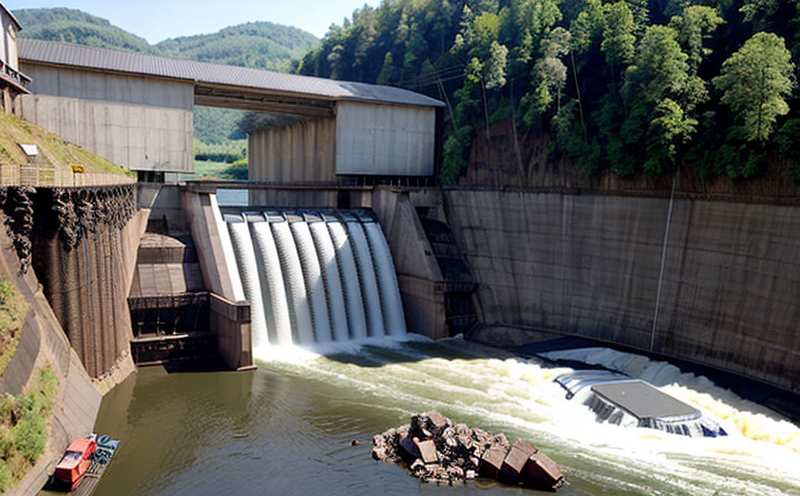Hydropower generator inspection
The inspection of hydropower generators is a critical process in ensuring the safety, efficiency, and longevity of these complex systems. Hydropower plants are vital to sustainable energy production, providing renewable electricity while minimizing environmental impact. A well-maintained generator ensures reliable operation, reduces downtime, and prevents costly repairs.
Hydropower generators consist of several key components including the turbine, the generator itself, and associated mechanical and electrical systems. The inspection process involves a thorough examination of these components to identify potential issues that could compromise the overall system performance or safety. This includes checking for wear and tear, corrosion, misalignment, and other signs of degradation.
The importance of regular inspections cannot be overstated. They help in preventing failures that can lead to extended downtime, increased maintenance costs, and even environmental hazards. By adhering to international standards such as ISO 13598 for turbine-generator sets, inspectors ensure consistency and reliability in their practices. The goal is not just to meet these standards but to exceed them by providing a comprehensive service tailored to the unique needs of hydropower systems.
During an inspection, various methods are employed depending on the specific requirements and conditions of the generator. This might include visual inspections, non-destructive testing (NDT), ultrasonic testing, radiographic examination, and even advanced computational fluid dynamics simulations for complex geometries. Each method is chosen based on its ability to provide accurate and reliable data about the internal and external condition of the generator.
The findings from these inspections are used to develop an action plan that may include immediate repairs, scheduled maintenance, or further testing. This ensures that any issues are addressed promptly before they escalate into more serious problems. The use of modern technology in inspection processes not only enhances accuracy but also minimizes disruption during the examination process.
By focusing on precision and thoroughness, hydropower generator inspections play a crucial role in maintaining the integrity and efficiency of these essential energy systems. Regular inspections are an investment in sustainability and safety, ensuring that hydropower continues to be a reliable source of green energy for future generations.
Why It Matters
The reliability and performance of hydropower generators directly affect the entire renewable energy supply chain. Ensuring these systems are free from defects through rigorous inspections is paramount in safeguarding not only environmental integrity but also economic stability. Hydropower plants contribute significantly to reducing greenhouse gas emissions, making their efficient operation crucial for combating climate change.
From a financial perspective, preventing unexpected breakdowns saves substantial amounts of money by avoiding costly repairs and downtime. Moreover, adhering strictly to international standards such as ISO 13598 ensures compliance with regulations, reducing legal risks associated with non-compliance. For quality managers and compliance officers, regular inspections serve as a proactive measure against potential hazards, aligning business practices with sustainable development goals.
In terms of safety, hydropower generators pose significant risks if not properly maintained. Failures in these systems can lead to accidents, injuries, or even fatalities. By conducting thorough inspections, risks are mitigated significantly, creating safer working environments for personnel involved in their operation and maintenance. This aligns with broader societal goals towards worker safety and health.
For R&D engineers and procurement specialists, hydropower generator inspections offer valuable insights into system behavior under various conditions. These data points can guide future innovations aimed at improving efficiency and reliability further. In the context of procurement, selecting suppliers who adhere to stringent inspection protocols ensures high-quality components are consistently delivered, enhancing overall product lifecycle management.
Ultimately, hydropower generator inspections are essential for optimizing the performance of renewable energy sources while promoting sustainable practices across industries reliant on them. Their significance cannot be overstated in today’s quest for cleaner, more efficient power generation methods.
Scope and Methodology
| Step | Action | Description |
|---|---|---|
| 1 | Visual Inspection | This involves a detailed examination of visible parts of the generator to check for any obvious signs of damage, wear, or corrosion. |
| 2 | Non-Destructive Testing (NDT) | Methods like ultrasonic testing and radiographic examination are used to detect internal defects without causing harm to the structure. |
| 3 | Instrumentation Analysis | Advanced tools such as thermography and vibration analyzers help measure critical parameters that indicate potential issues within the generator. |
| 4 | Data Interpretation | The collected data is analyzed using industry-standard techniques to assess overall health status of the generator. |
| 5 | Action Plan Development | An actionable plan is created based on the findings, specifying necessary repairs or further testing required for optimal performance. |
| Component | Type of Inspection | Description |
|---|---|---|
| Turbine Blades | Infrared Thermography | Detects heat signatures indicative of areas experiencing excessive strain or wear. |
| Generator Bearings | Vibration Analysis | Monitoring rotational imbalance and misalignment helps prevent premature failure. |
| Rotor Assembly | Ultrasonic Testing | Likens sound waves to identify internal cracks or other anomalies. |
| Cooling System | Leak Detection | Ensures there are no leaks that could compromise the integrity of the cooling system. |
Industry Applications
- Renewable Energy Facilities
- Hydropower Plants Maintenance
- Environmental Surveillance Programs
In renewable energy facilities, particularly hydropower plants, regular inspections are indispensable for maintaining optimal performance. These inspections ensure that all critical components remain operational and efficient, thereby maximizing output without compromising safety or environmental impact.
The maintenance aspect of hydropower generators is another key area where inspection services play a crucial role. By identifying potential issues early on, planned maintenance schedules can be established to avoid sudden failures during peak periods when the plant needs to be at full capacity.
Environmental surveillance programs also benefit greatly from comprehensive inspections of hydropower generators. This helps in monitoring both operational efficiency and ecological footprint associated with these facilities. Ensuring minimal disruption to surrounding ecosystems through effective management practices is essential for sustainable development initiatives globally.





